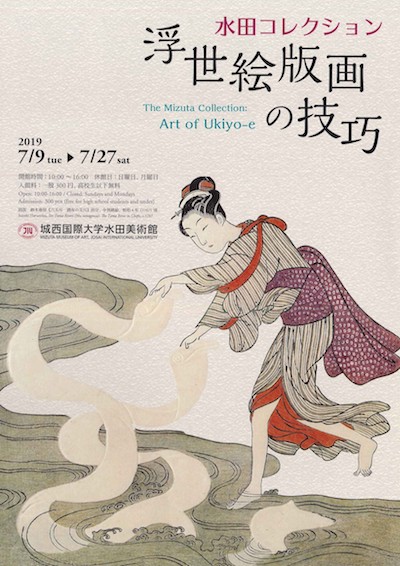Ukiyo-e prints started with a monochrome print published by Hishikawa Moronobu in the second half of the 17th century. They soon developed into tan-e, woodblock prints hand-colored on the main monochrome prints, urushi-e, hand-colored woodblock prints with urushi-like gloss, beni-e, hand-colored woodblock prints using a red color, and benizuri-e, woodblock prints in a red and grass green. In 1765, nishiki-e, full-color woodblock prints, was developed by Suzuki Harunobu and other artists, which led to the creation of a variety of expressions utilizing advanced techniques in cooperation with publishers, painters and artisans.
These people competed to create new woodblock printing techniques, such as exquisitely engraving hair line by line, Shomen-zuri techniques to express patterns by adjusting the light, and kira-zuri, as seen in ōkubi-e (literally “large head pictures”) by Sharaku. During the golden age of landscape prints led by Hokusai and Hiroshige, the advanced skills of shading and printing by subtly layering colors to express the weather and the passage of time peaked, and Japanese woodblock printing techniques became globally unrivaled.
This exhibition focuses on the sophisticated art of engraving and printing in ukiyo-e prints and creative expression. It also introduces the ukiyo-e printing process using reprints.

Torii Kiyoshige, Ichikawa Danjūrō II as Fuwa Banzaemon and Ōtani Hiroji as Yamana Nyūdō, 1731

Tōshūsai Sharaku, Segawa Tomisaburō II as Yadorigi, wife of Ōgishi Kurando, 1794




